The wood grain are the typical ‘marks’ of wood: what makes it recognisable and what, at first glance, differentiates it from any other. They are always different – a bit like our fingerprints – and there are no trees with identical grains: this is also what makes every artefact made from this extraordinary material unique;
Also called striae, the veins consist of small conducting vessels that run up the trunk of the trees and then the branches, up to the leaves, carrying water and mineral salts.
Depending on their arrangement in the trunk, and how the trunk is cut, very different lines and effects can appear;
In the following we try to get to know and recognise them better, and to enhance them with the right products;
The structure of wood
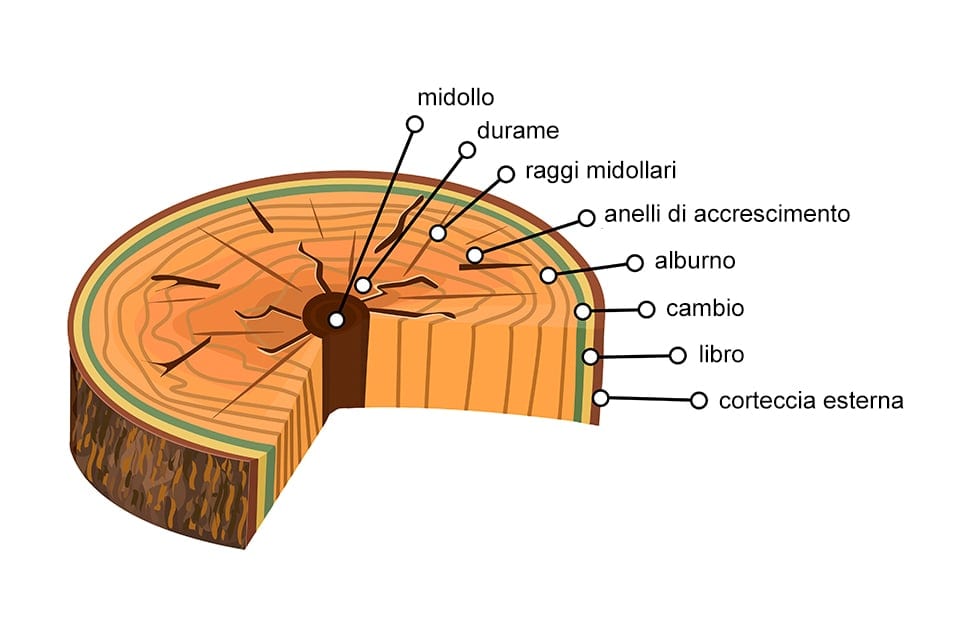
The different parts that form the structure of a tree trunk are as follows:
- marrow: is the central part, more or less regular cylindrical in shape. In some cases it disappears, leaving a cavity. It is a low-value part and the boards containing it have little value;
- heartwood: this is the innermost area, pith aside, and the most commercially valuable. It is a no longer vital part of the trunk, less prone to attack by pests, and it is from this that the solid wood;
- medullary rays: these are cellular structures that appear, precisely, as rays when cutting a section of a trunk. They act as a link between the central part of the tree and the peripheral part, and store water and nutrients there;
- growth rings: these are the concentric rings that are clearly visible when the trunk is cut. They are formed by the activity of the change (see below). Each ring consists of two zones, one spring (early wood) and a summer (late wood). Counting them, as is well known, can be traced back to the age of the plant with a good approximation. A small curiosity: in tropical plants – as they do not have a growth ‘pause’ in autumn and winter – the rings are often not present;
- sapwood: is the youngest woody part, and surrounds the heartwood. It is composed of living plant cells that carry the sap. In early winter, it is slowly absorbed by the heartwood;
- change: is a very thin layer responsible for the growth of the tree. It creates two types of tissue: one woody inwards, the sapwood, and one outwards, the so-called book;
- book: protects the interior from moisture and contains the vessels that carry the nutrients synthesised by the leaves to the rest of the tree;
- outer cortex: consisting of dead cells, it protects the plant from fungi, insects, shocks, weather and temperature changes.
Wood grains: differences
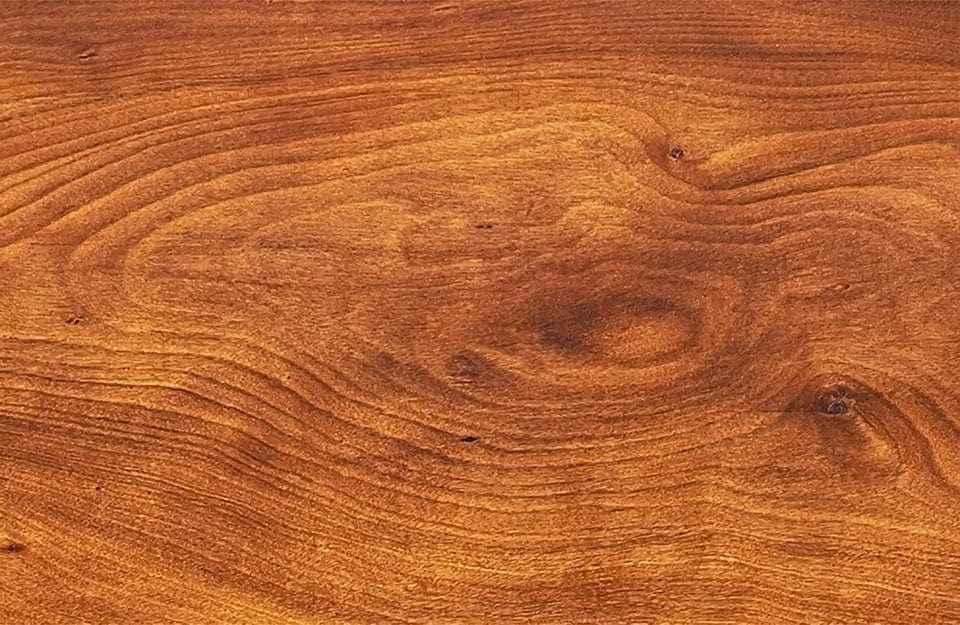
As already mentioned, every tree has its veins. The different species, however, share certain characteristic types of grain, which are also – together with colour – among the most effective clues for recognise wood.
Below we show the grain of some of the most popular woods used in furniture making;
Oak
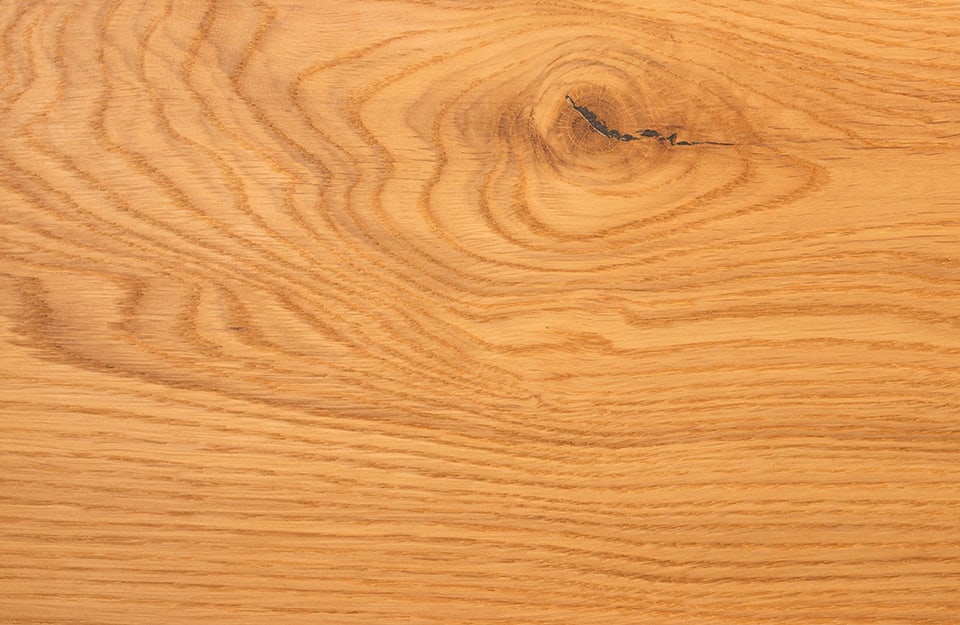
It has irregular and very evident veins. It is a open-pore, i.e. with hollowed-out grain; The colour ranges from golden yellow to brown, and changes according to age and origin;
Oak is the most widely used wood for parquet;
Cherry tree
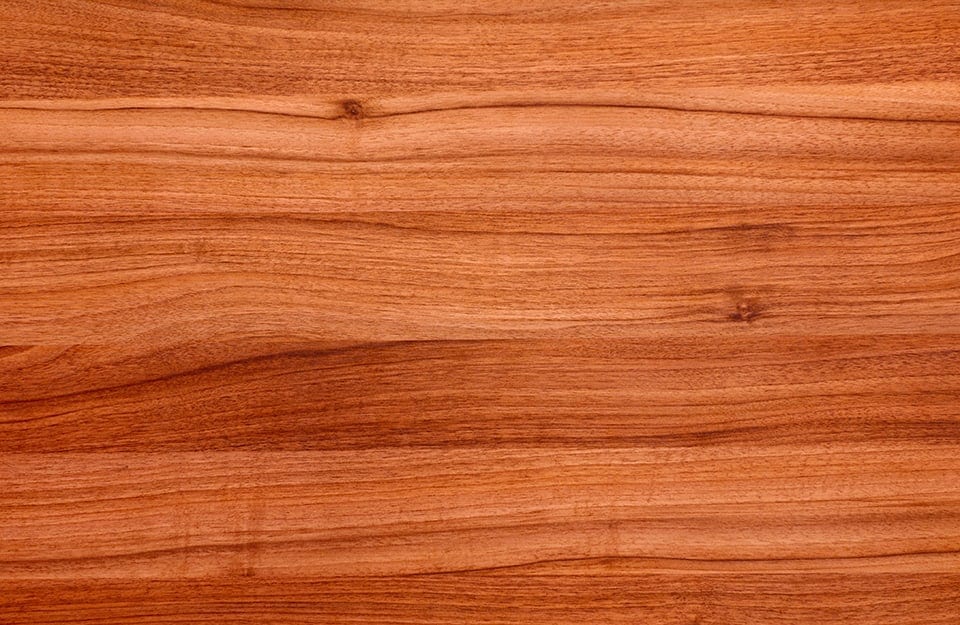
It has a reddish colour (but American cherry reaches brown) and darker veins. The grain is fine and the grain is regular and straight;
It is a very durable wood, used in fine furniture as well as in cabinetmaking, for fixtures, flooring and decorative elements;
Cherry, like oak, is also open-pore;
Walnut
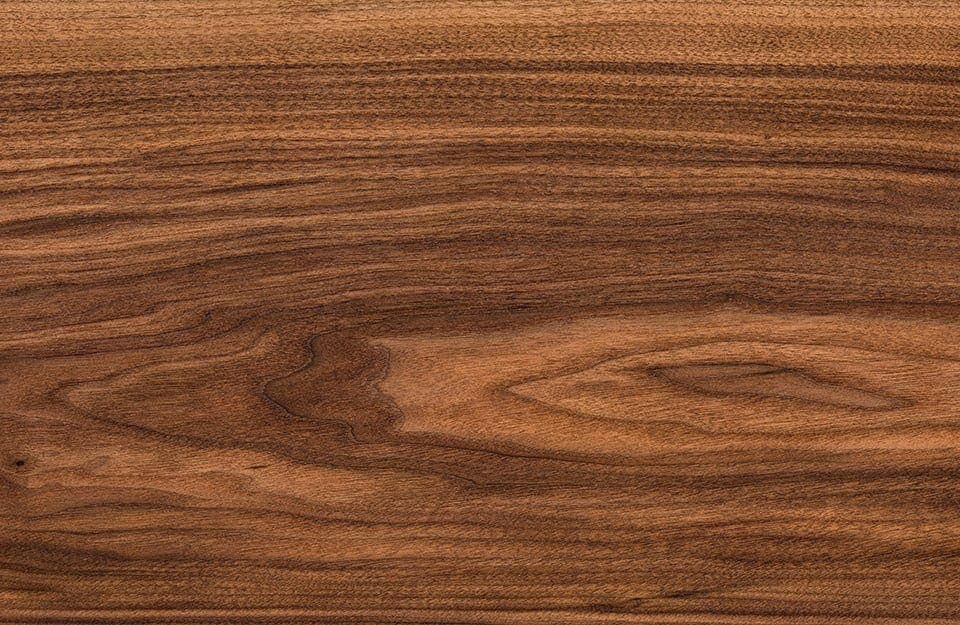
It is one of the most prized essences. Brown in colour, there are many species, each with its own characteristics. It is a closed-pore, so the veins – of iridescent hues, ranging from brown to grey to black – are not hollowed out, yet they are very evident. The fibre is hard and compact;
It is used for furniture and ornaments;
Chestnut
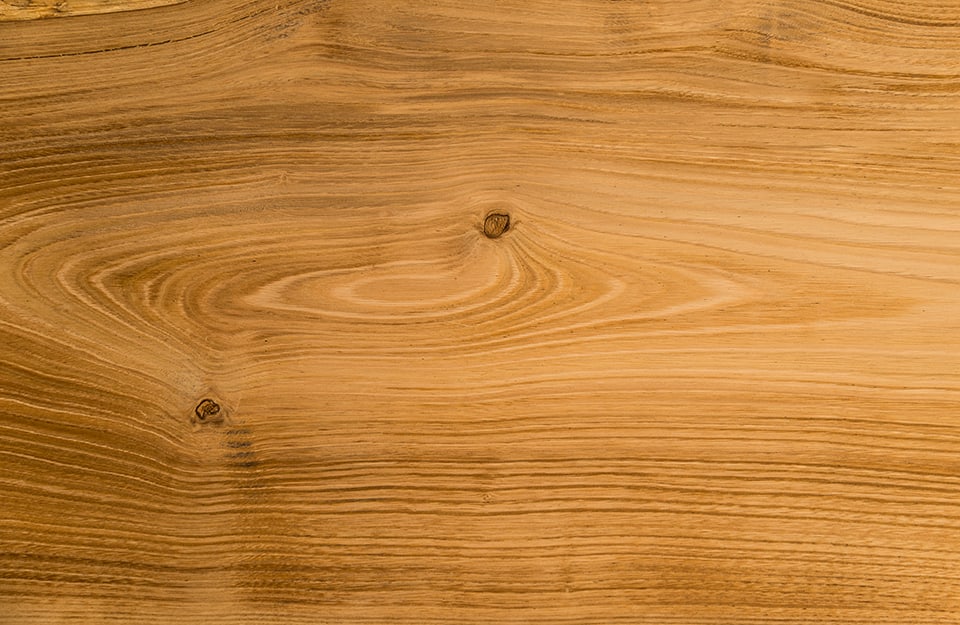
It has a light brown colour and reddish-brown veins. It has an open pore. It is compact and rich in tannins;
It is used for rustic furniture, staves, window frames and floors. It is among the most durable woods;
Mahogany
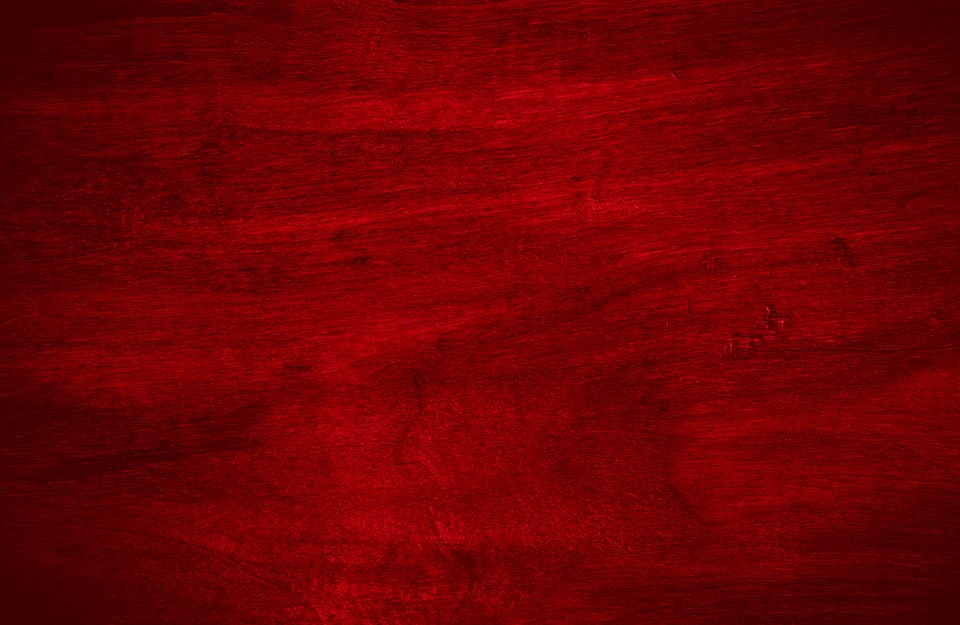
It is a very valuable dark wood, richly grained, with shades ranging from brown to reddish;
It is a very porous wood, with a fine and homogenous texture;
It is mainly used for fine furniture, marquetry, musical instruments and boat fittings;
Ash
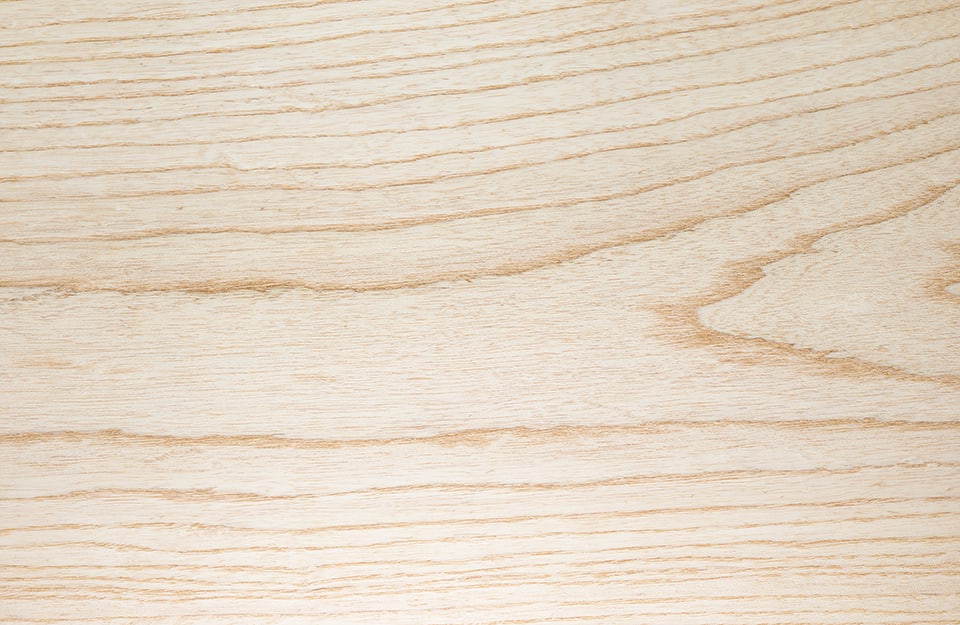
It is a light wood, with shades ranging from ivory white to pinkish. It is light but very strong, and has fine, regular, open-pore grain. The grain is straight and the texture coarse;
It is used for rustic furniture, handicrafts, sports equipment and stakes for killing vampires!
Beech
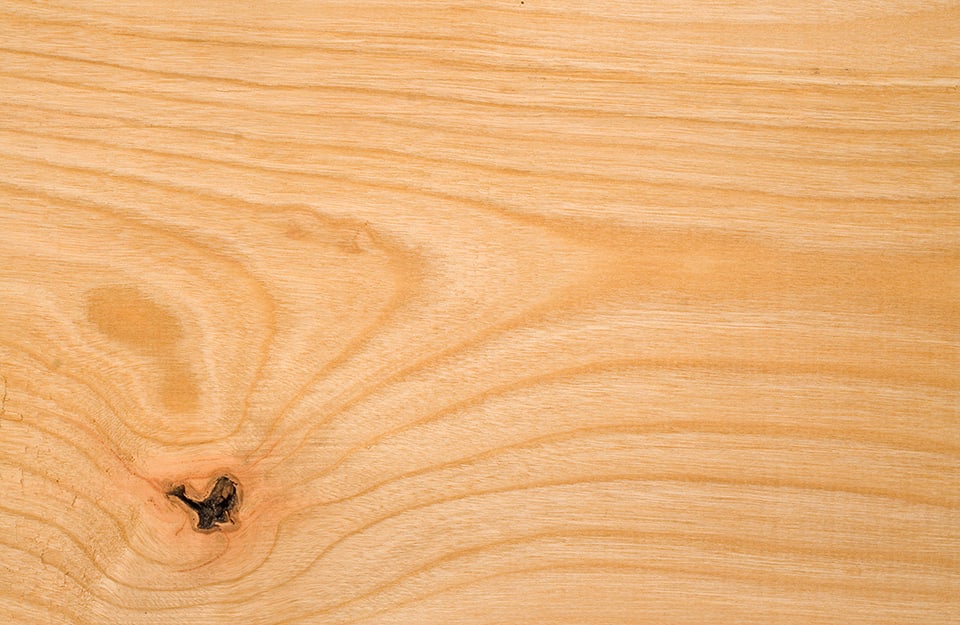
It is a wood with fine grain. The fibre is straight and the pores are not visible. It has a very regular appearance. The colour is light, whitish to golden yellow, sometimes tending to pinkish;
It is used for furniture, fixtures, flooring and carpentry;
Spruce
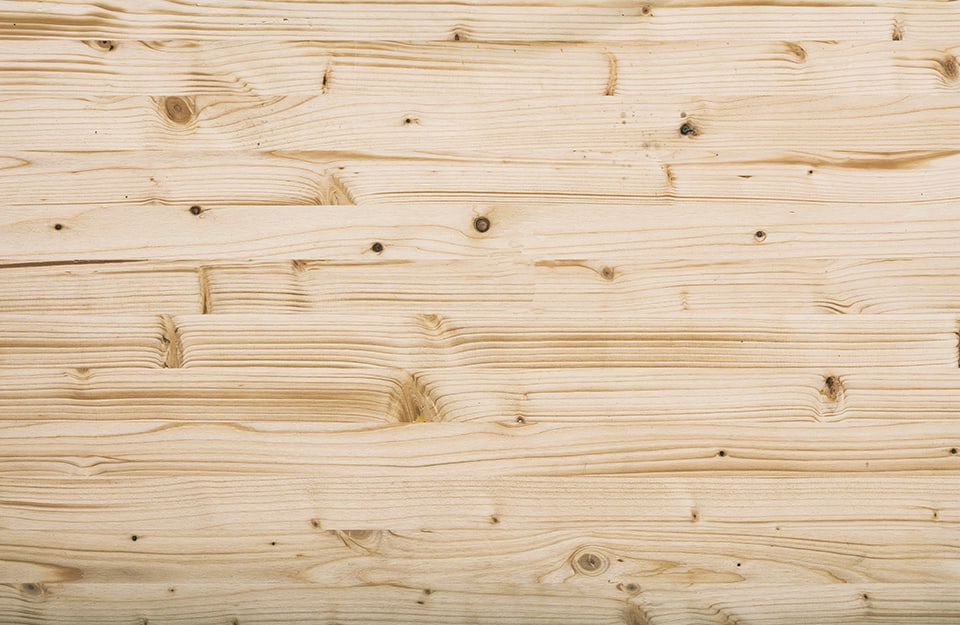
It is a soft, light wood with regular yellow or red veins;
Widely used for furniture and flooring. Spruce is considered the best wood for making the sound box of violins;
Pine
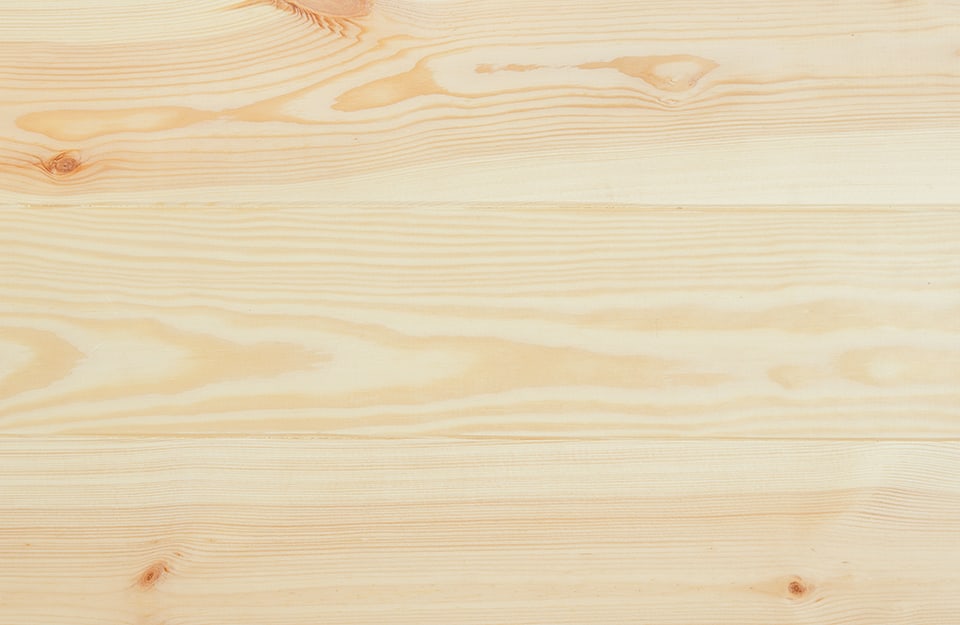
It has a whitish, yellowish or reddish colour, with linear veins. The texture is medium and the grain straight;
It is rich in resin. Harder and stronger than fir, it is used extensively in carpentry and construction, including for window frames and matchboarding;
How to enhance them and make them stand out
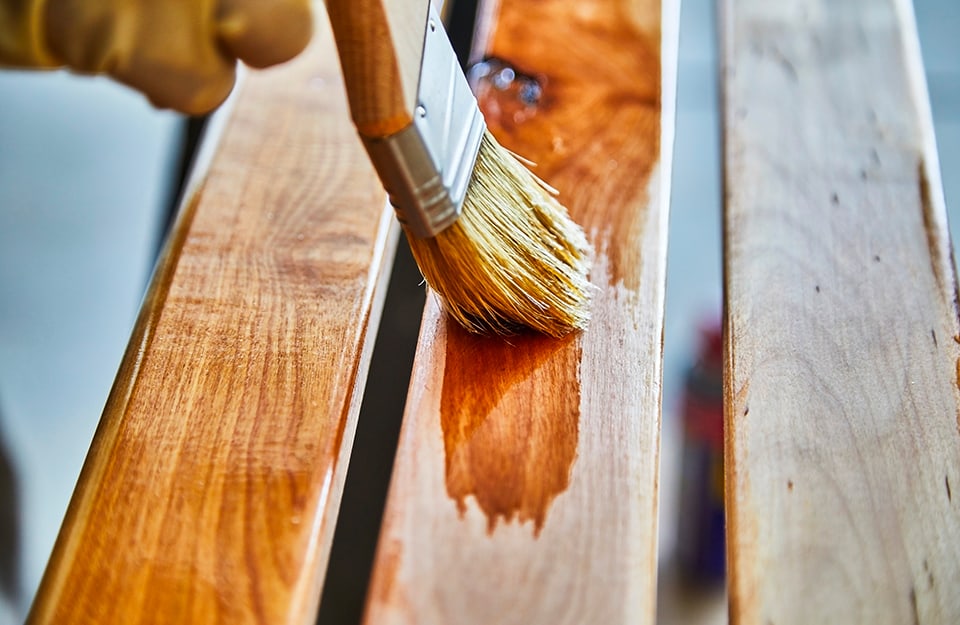
If we have furniture or elements with obvious and interesting grains, we should enhance them. To make them stand out, the right products and finishes must be used;
The first question to ask is: am I working with an open-pore or a closed-pore wood?
In the case of a wood open pore we are faced, as mentioned above, with an essence characterised by hollowed-out grain. It is therefore possible to accentuate this peculiarity through processes called brushing (shallower) or rustication (which goes deeper). In both cases, special steel abrasive brushes are used to hollow out the soft fibre to further highlight the grain;
After this step you can continue depending on the location of the piece you are going to treat – indoors or outdoors – and the effect you want to achieve;
- For indoor:
- matt effect finish: Rio Verde’s transparent RP 4060 water-based matt finish protects the wood and leaves its natural colour and grain visible; It is water-repellent and formulated on the basis of acrylic-polyurethane resins with a very low solvent content;
- high-gloss finish: Rio Verde’s transparent RP 4160 water-based high-gloss finish has the same characteristics as the matt finish, but makes the surface shiny;
- For outdoor use:
- a transparent water-based impregnating agent, either classic or wax-like, must first be applied;
- then the finish can be applied. If you have chosen to use a classic impregnating agent, you can use a classic water-based finish or a water-based wax finish that is very soft to the touch; The latter should also be used after the wax impregnating agent;
15 images to draw inspiration from for your home
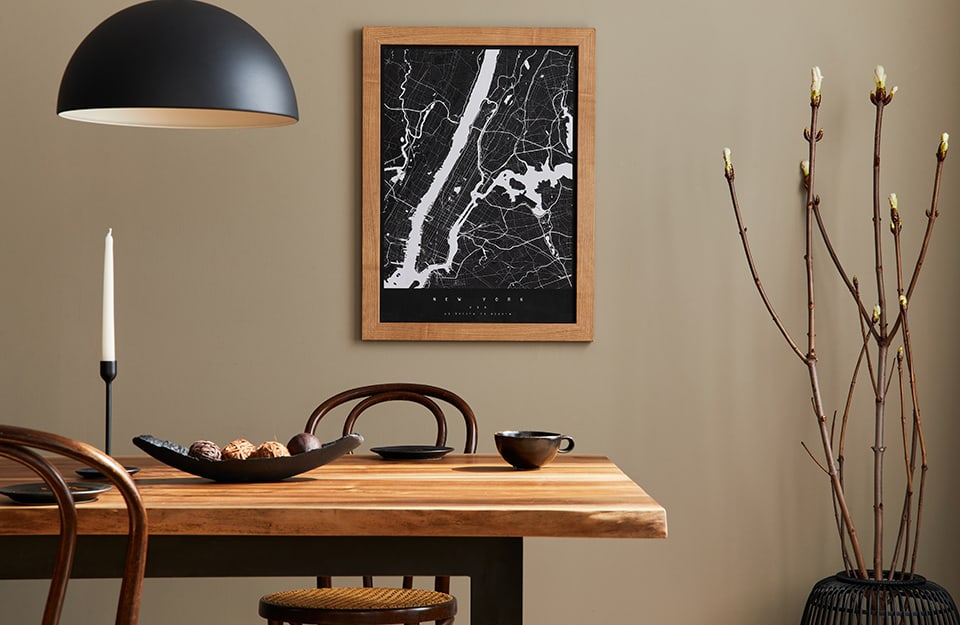
Dining table with exposed grain in a rustrial style room;
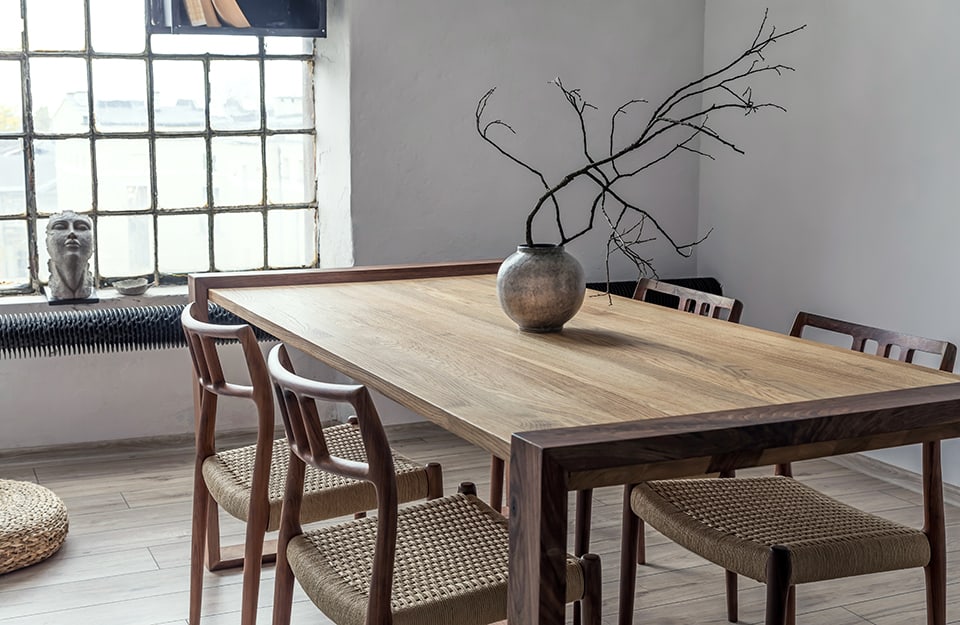
Another table, with two types of wood, both with well-marked grain;
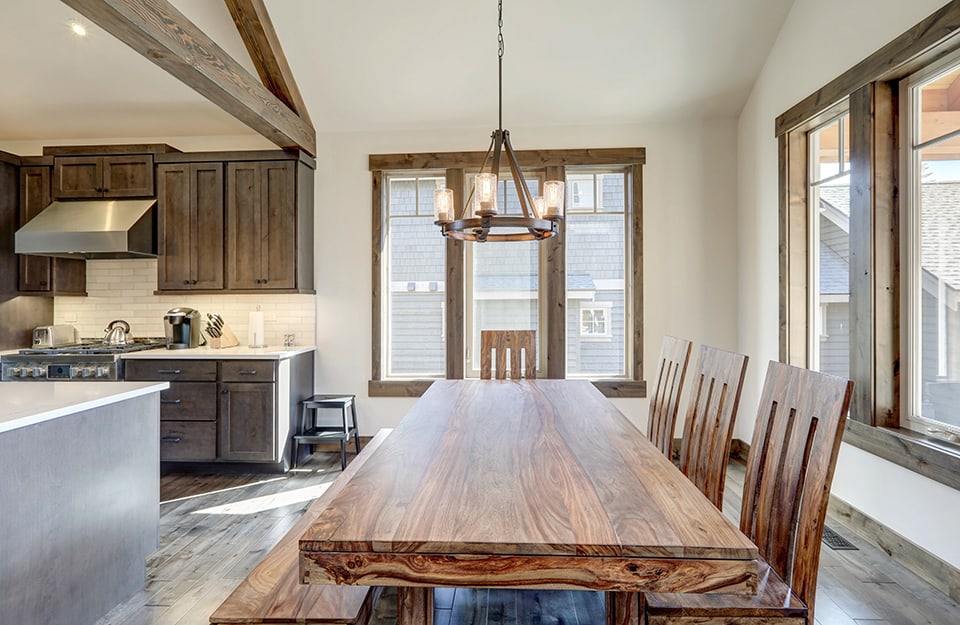
A long rustic table. Here the grain is the focal point of the whole room;
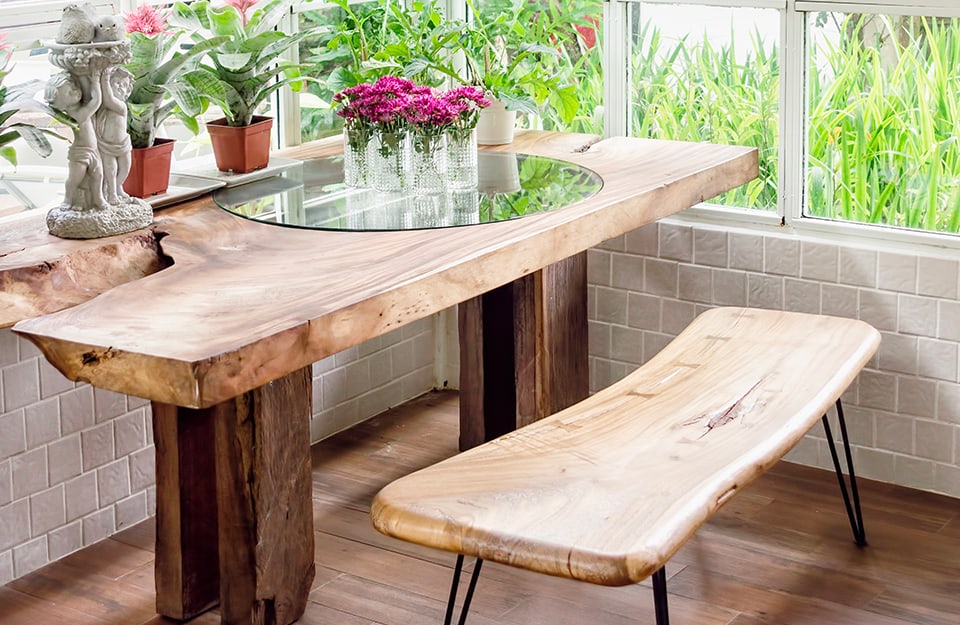
Table and chair made from reclaimed wood, exploiting its irregular lines, imperfections and grain;
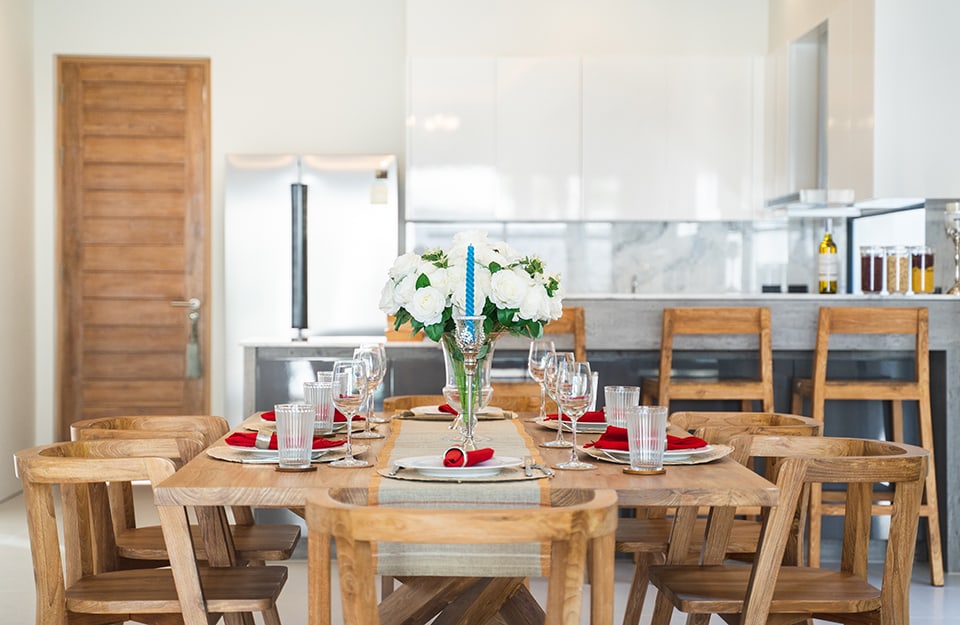
Such a table is a shame to hide it with a tablecloth;
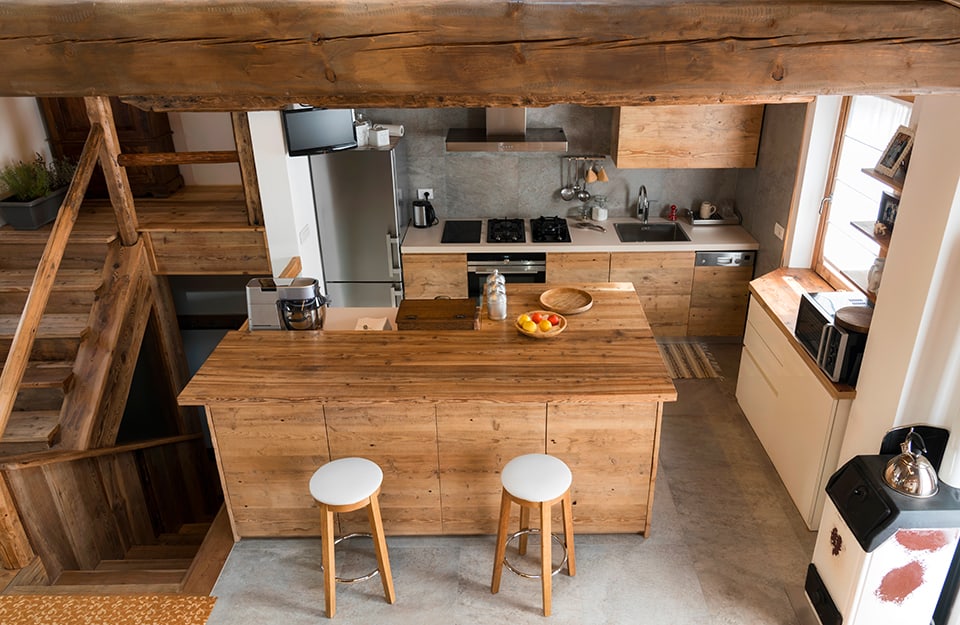
In a rustic style kitchen, wood grains are the main element of décor;
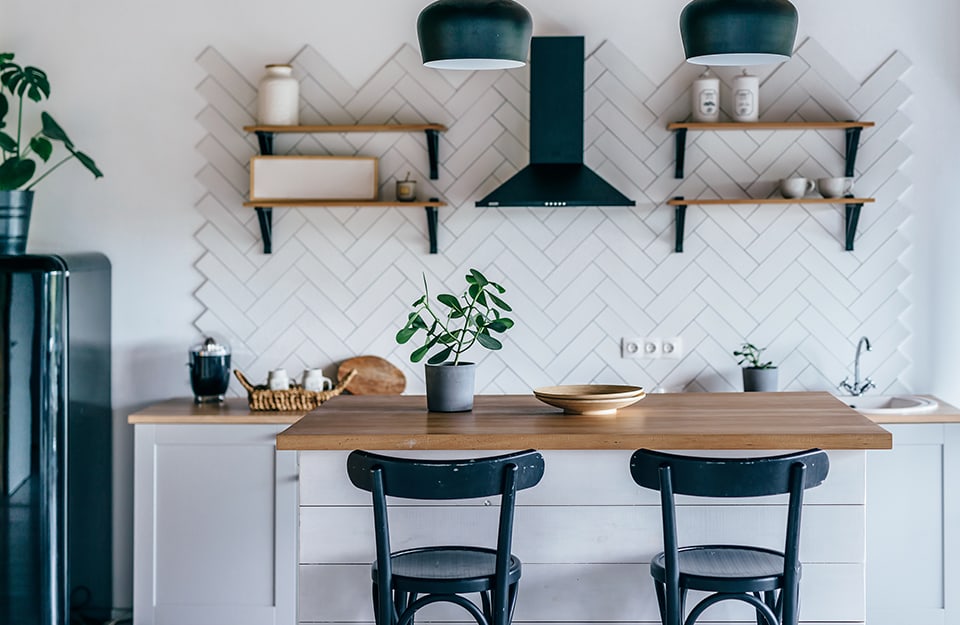
The natural wood stands out and makes white stand out, enhanced by a dark accent colour such as this petrol green;
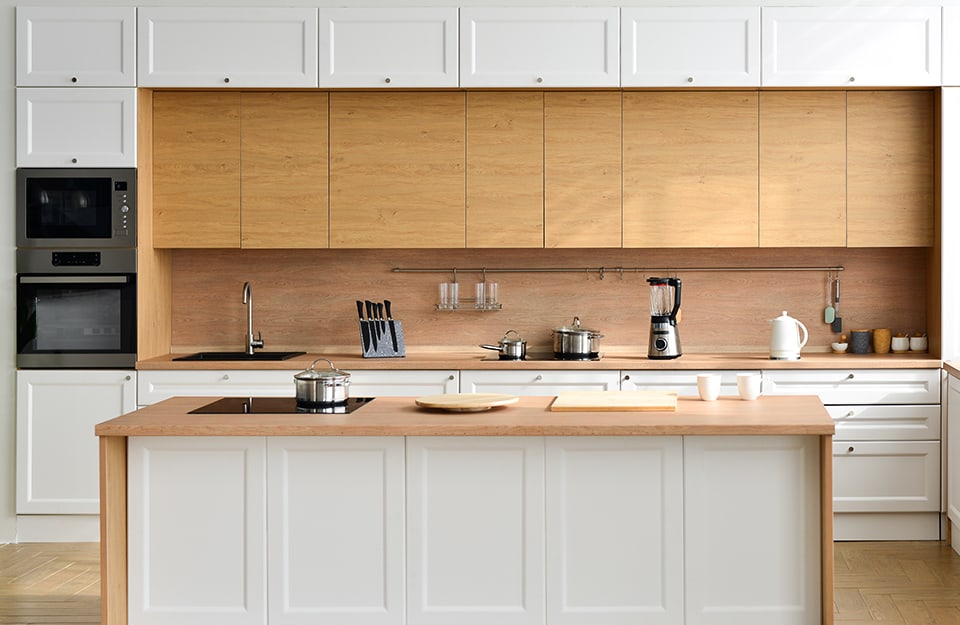
Again, the natural wood and its grains blend perfectly with the white of the rest of the kitchen.
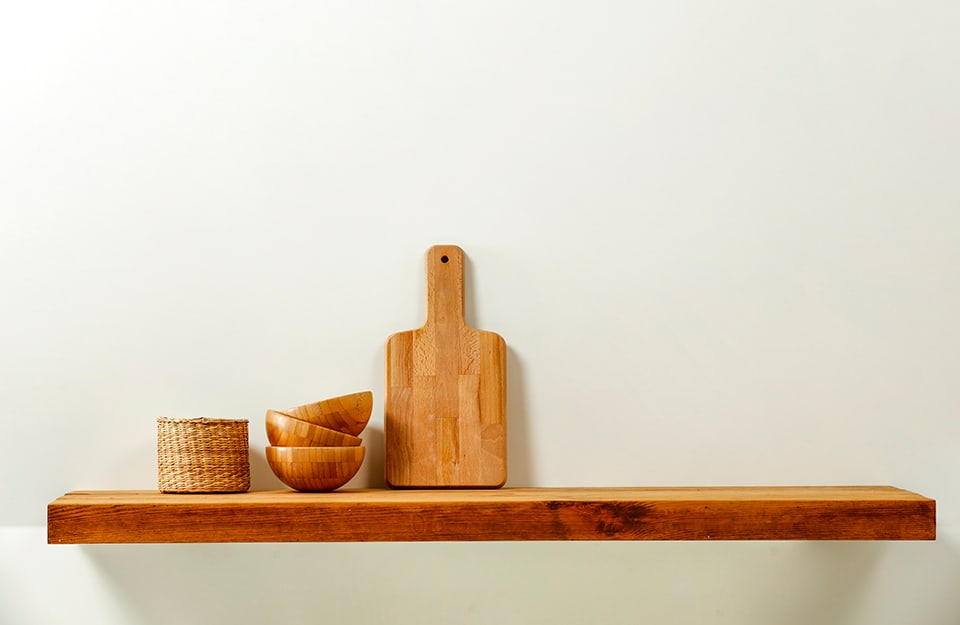
Sometimes, very little is needed: a shelf made of natural wood with some wooden elements on top.
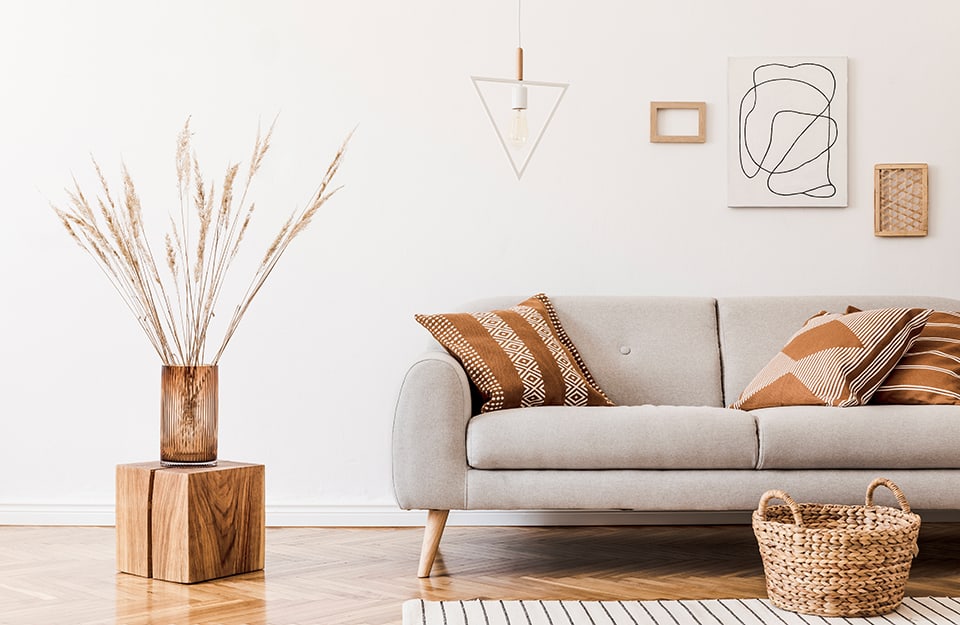
A cube-sculpture that serves as a coffee table or stool echoes the natural tones of this living room, from the cushions to the parquet flooring to the decorations.
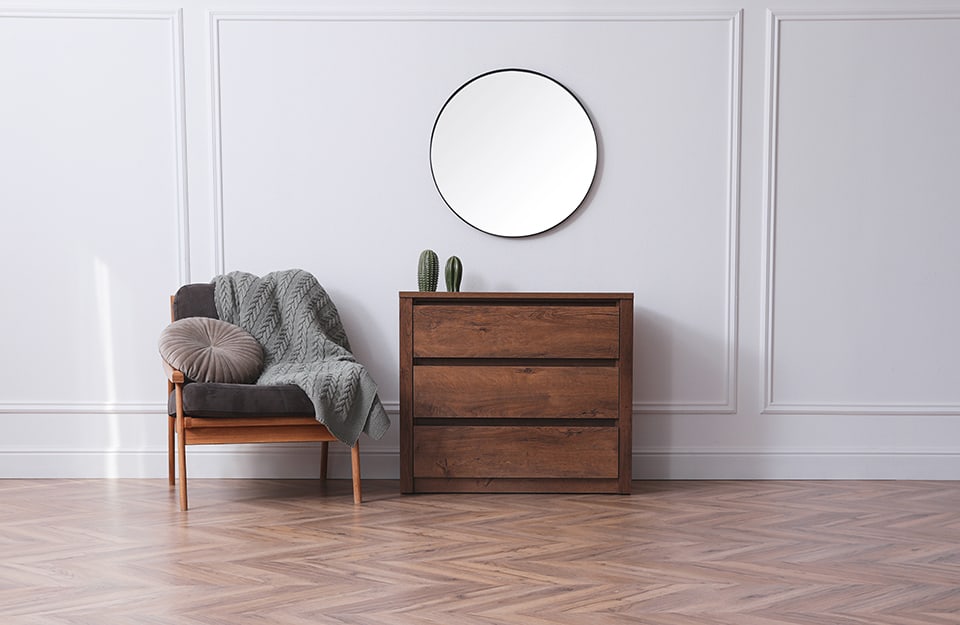
A simple natural wooden chest of drawers, with its visible grain, can become the centrepiece of an entrance hall or a transition room.
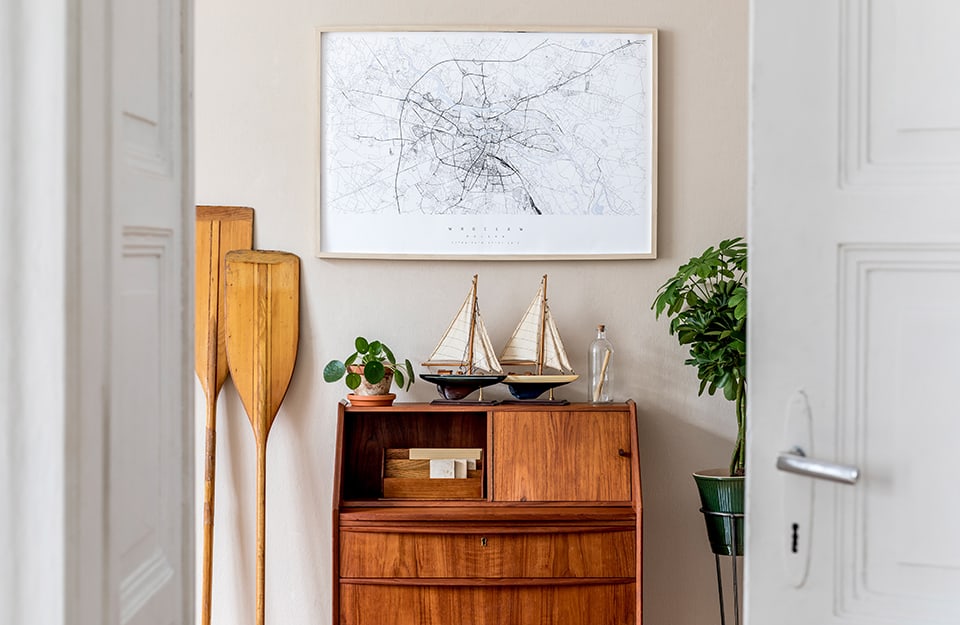
A conscription desk enhances an otherwise anonymous hallway, decorated in this case with nautical-themed elements.
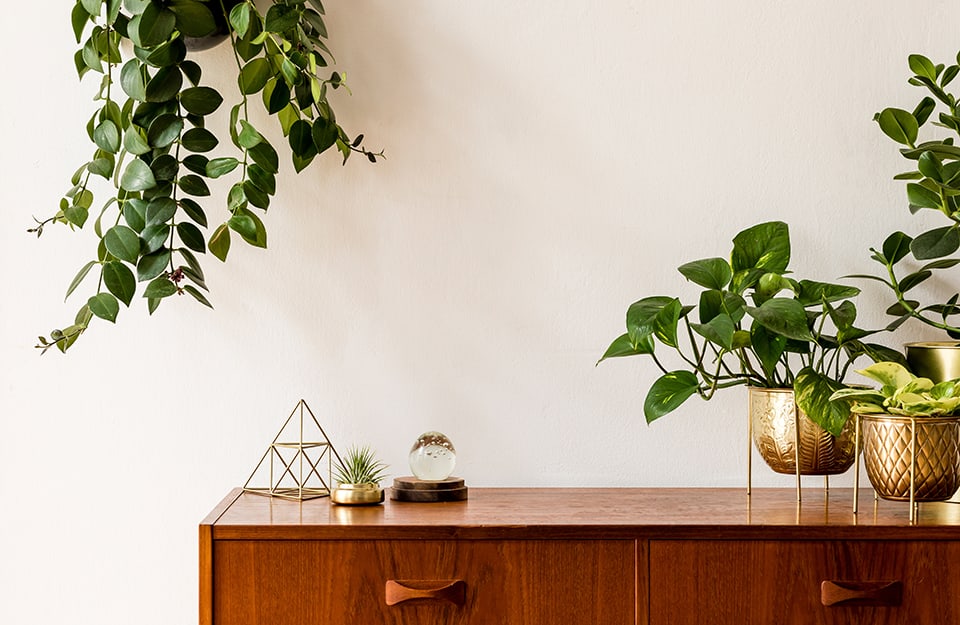
Detail of a console table in modernist style. Natural wood elements obviously go well with plants, but also with metallic decorations.
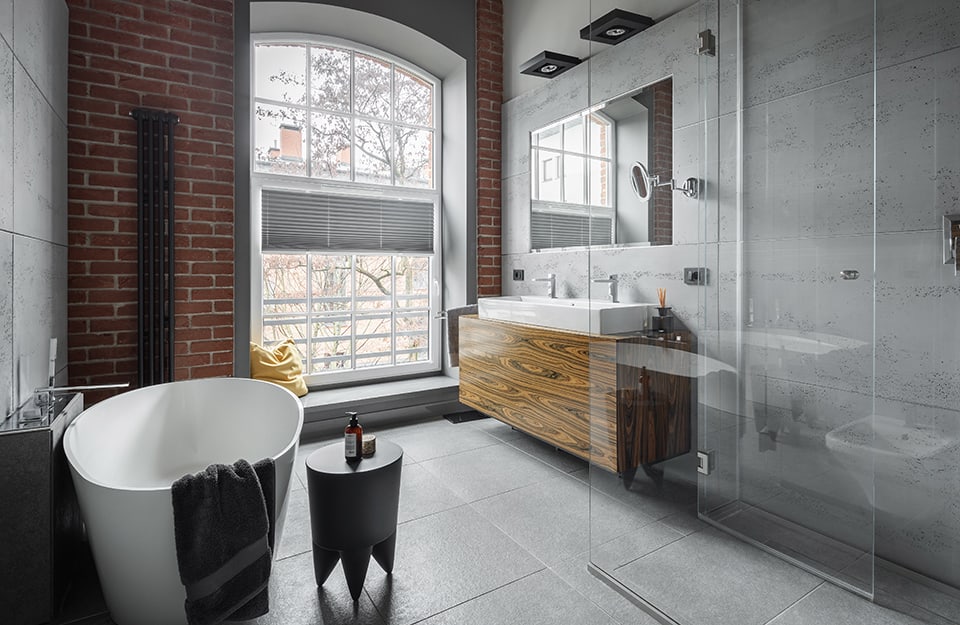
A bathroom in an industrial-style house. Here the attention is catalysed by the washbasin cabinet, in natural wood with very prominent grain, which creates an interesting contrast with the rough concrete wall.
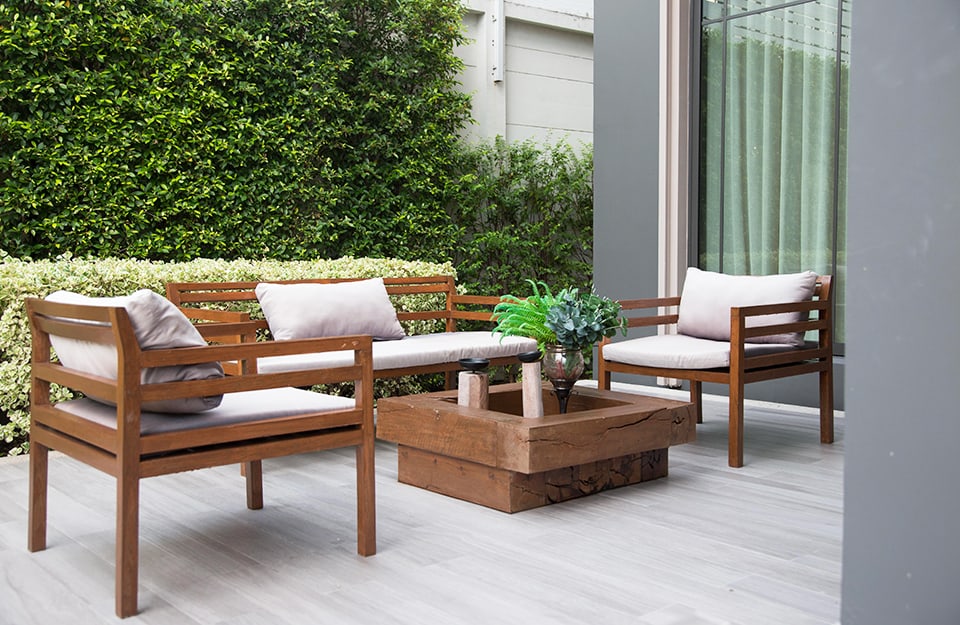
Even in garden furniture you can enhance the beauty of natural wood, provided you use the right products to protect it properly.


